If you're making a recipe that calls for granulated garlic and can't seem to find any in your pantry, you may have some great options on hand that will work as a substitution.
Scroll down to learn all about garlic including different ways it is available to home cooks. All of these options might work perfectly in your recipe as an alternative to granulated garlic.
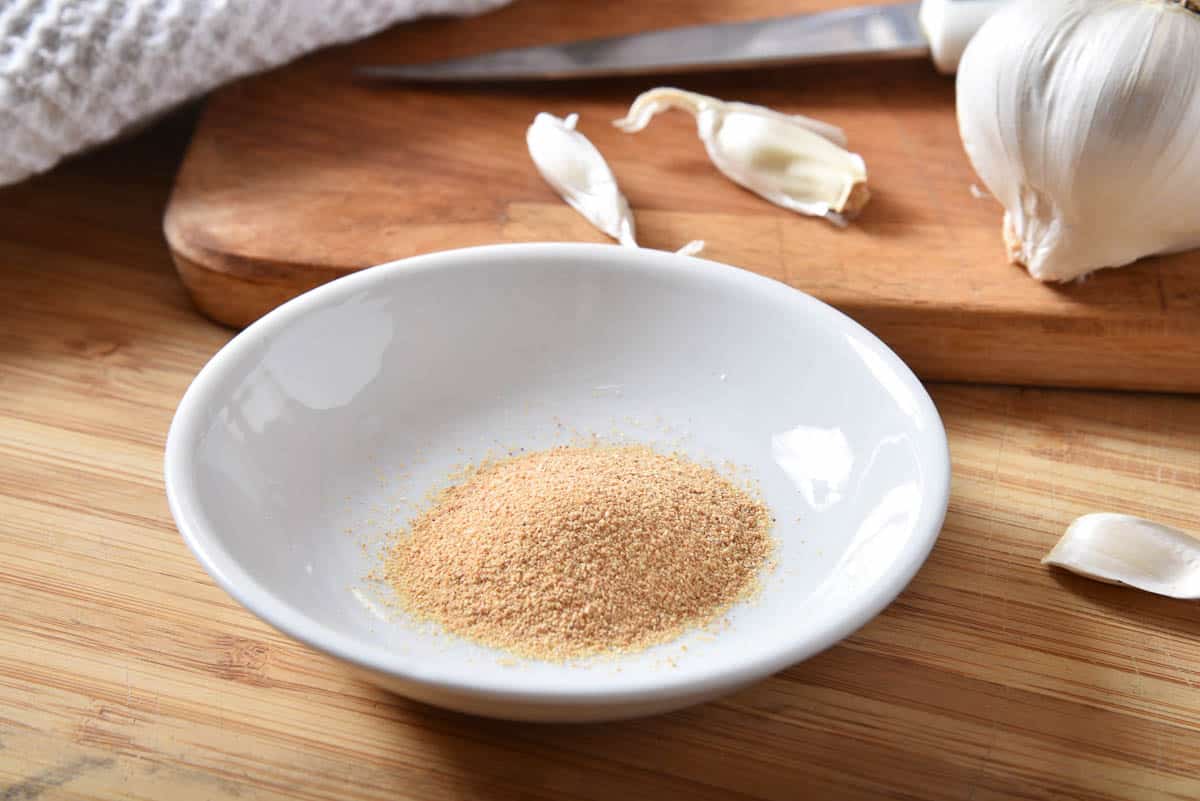
Jump to:
Domestic vs. Chinese Imported Garlic
The garlic capital of the US is Gilroy, California. However, a large percentage of garlic sold in American grocery stores is actually imported from China. Some figures estimate imported Chinese garlic to be about 60%, while some indicate it is closer to 90%.
Many US consumers find this troubling because Chinese garlic is known to be sprayed with neurotoxic chemicals and pesticides that are banned in the US. Fresh water is not readily available to all commercial growers, causing many Chinese crops to be tainted by sewer water and heavy metals.
If you prefer to purchase domestically grown garlic, look for roots on the bottom. Domestically grown garlic is usually sold with roots. However, if the garlic has been clean cut at the bottom, and maybe even a little concave, that means it is from China.
Additionally, many of the store-bought garlic products mentioned below may also contain garlic that is not grown in the US.
Of course, the best way to ensure you don’t accidentally buy Chinese garlic is to buy from a local farm, Farmer’s Market, or grocer that supports locally grown produce. If you have any questions, your local grocer should be able to answer them.
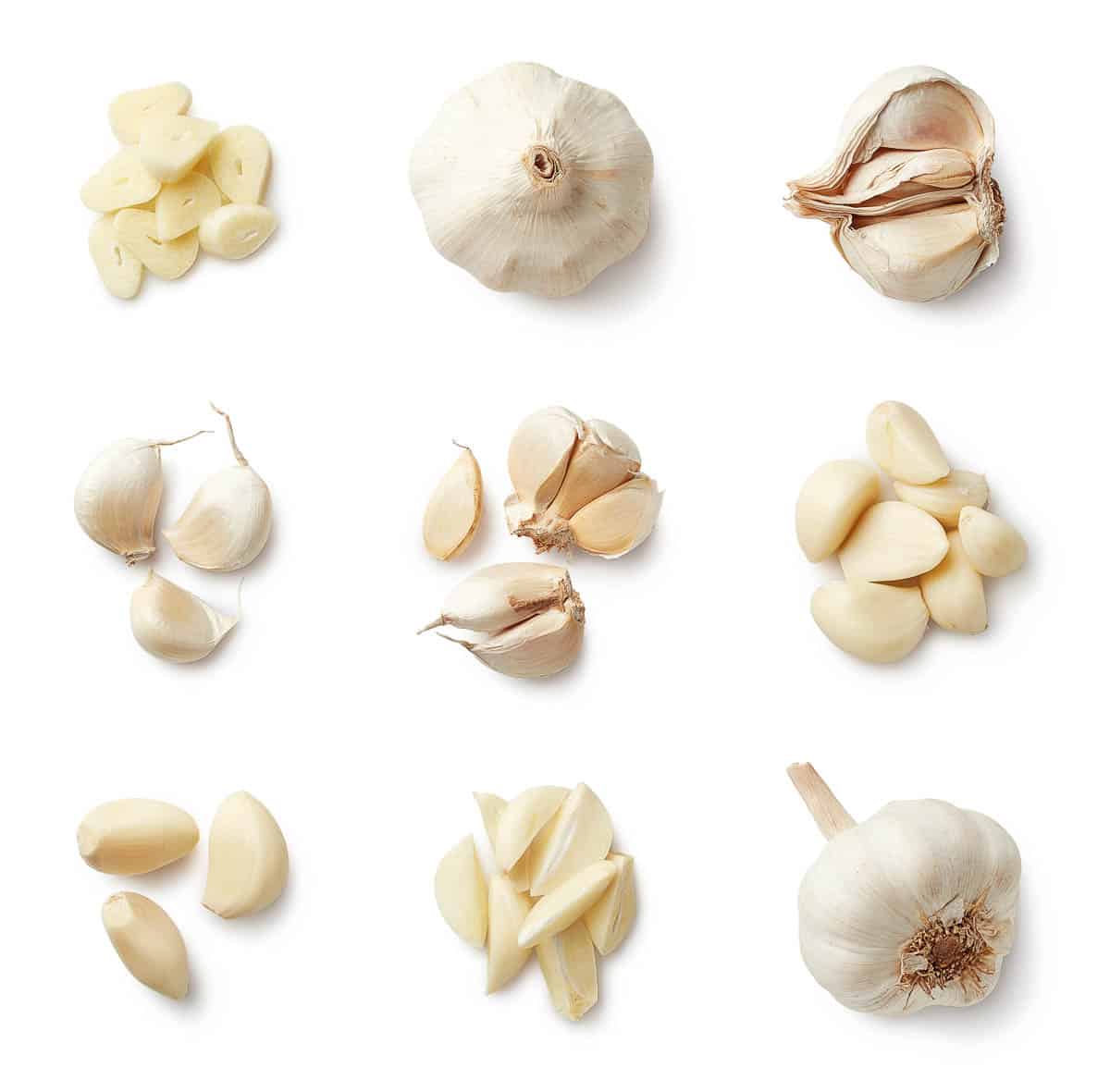
Granulated Garlic vs Garlic Powder vs Fresh Garlic
Like onions, garlic belongs to the allium family and is used in many savory recipes. A head of garlic is often called a bulb and consists of several segments called cloves. Each bulb contains anywhere from 8-20 cloves, each of which can be plucked, peeled, and used for cooking a variety of recipes.
Both granulated and powdered garlic are made from fresh garlic that has been oven dried and ground down into a powder. The drying process changes the flavor profile, with the resulting granules and/or powder losing the “heat” that fresh garlic typically adds to the recipe.
Granulated garlic is ground into a coarse, almost sand-like powder. The granules are relatively large and easy to see. Garlic powder, on the other hand, is ground into a much finer powder. The consistency is closer to that of flour, and the individual grains are very difficult to see.
Zooming out, we can see that fresh, granulated, and powdered garlic are all made from the same stuff (raw garlic cloves). The only difference is the way it is processed.
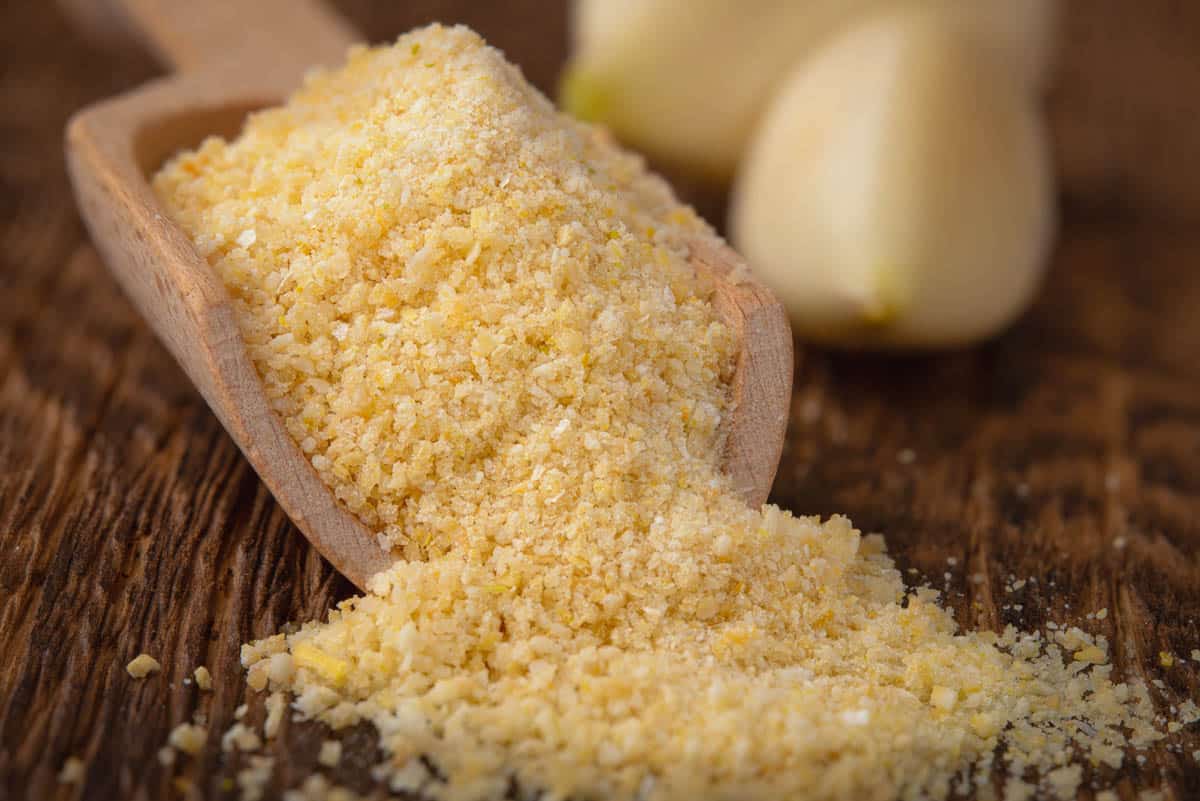
Granulated Garlic
- Flavor: Same as fresh, but without the “heat” aspect. Milder garlic flavor compared to powdered.
- Appearance: Coarsely ground texture. Resembles sand or cornmeal.
- Best for: Salad dressings, soups, stews, sauces, and dry rubs for meats. Rehydrates well in liquids and does not clump easily.
Powdered Garlic
- Flavor: Same as granulated (also no “heat” aspect). Stronger, more concentrated garlic flavor compared to granulated.
- Appearance: Finely ground texture. Resembles flour.
- Best for: Convenience, adding flavor at end of recipe, and any situation where garlic must be evenly combined with other dry ingredients. Avoid using with sautés and other high-heat recipes as the powder may burn.
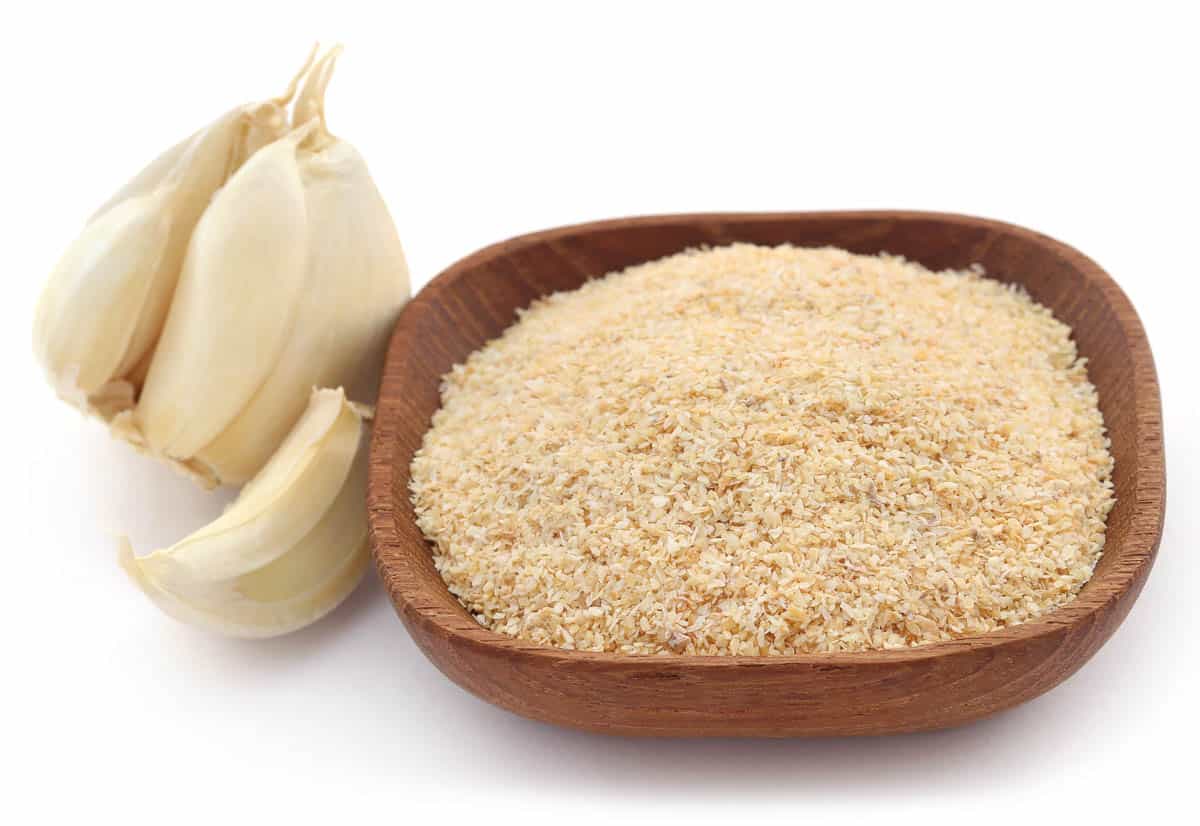
Fresh Garlic
- Flavor: Pungent when raw, yet softer, sweeter, and reminiscent of onion when cooked. Fresh garlic also has a “heat” aspect to it.
- Appearance: Least processed form. May appear as whole garlic bulbs or individual cloves. Each fresh clove may be skinned, crushed, chopped, or minced.
- Best for: Medium heat cooking and baking. This form is essential when sauteeing, as granulated and powdered garlic will burn easily in a pan or wok on medium heat.
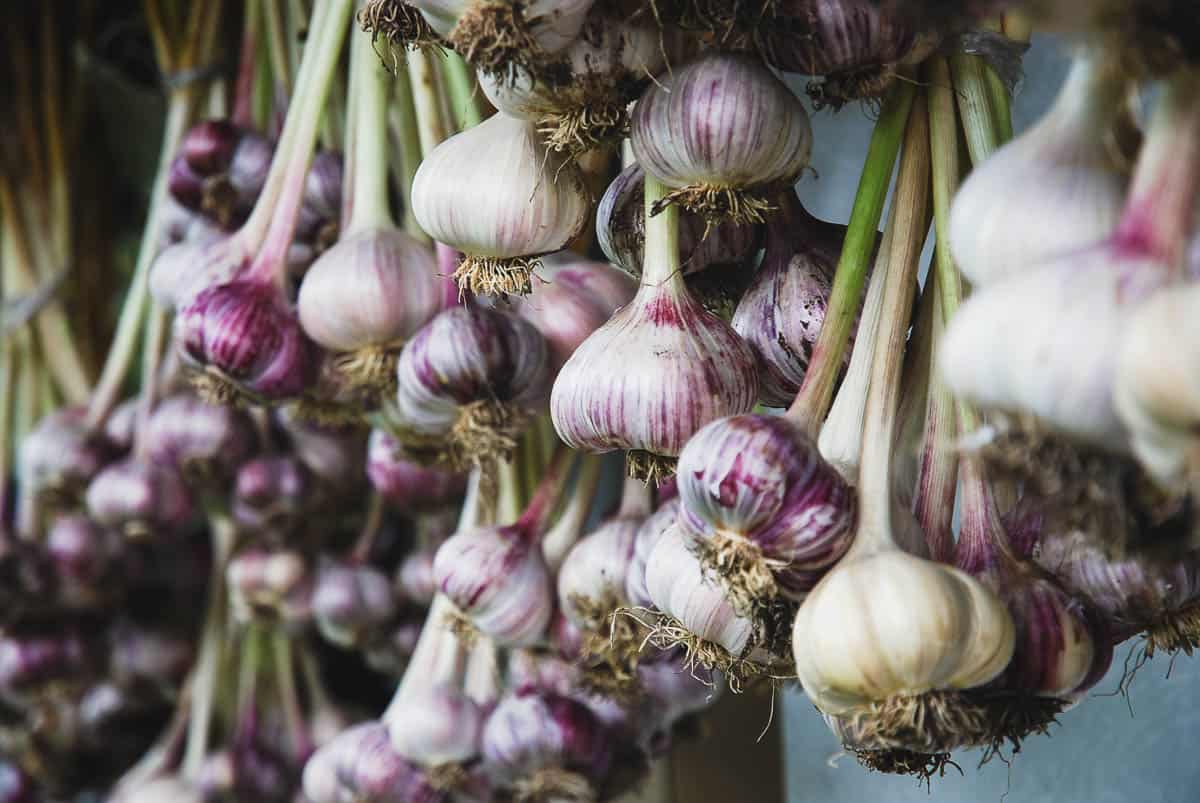
Best Granulated Garlic Substitutes
Garlic Powder
This is the best substitute for granulated garlic. As mentioned above, both powdered and granulated garlic are made from oven dried garlic cloves. The main difference is the degree to which they are ground down. This makes it a great match from a flavor perspective.
However, powdered garlic will always taste more potent and intense than granulated. This is because the fine powder has more total surface area than coarse powder, which allows more of the sulfur to oxygenate and contribute to both aroma and taste.
For that reason, use less when substituting with garlic powder. This option is best used in marinades, soups, stews, sauces, and any recipe in which garlic must be evenly combined with other ingredients.
- Substitution: Use 1:2 ratio for each teaspoon of granulated garlic. For example, if the recipe calls for 1 teaspoon of granulated garlic, use ½ teaspoon of garlic powder.
- Special Notes: This is the best substitute for granulated garlic. More potent flavor, however. Especially useful in recipes that call for garlic to be evenly combined with other ingredients.
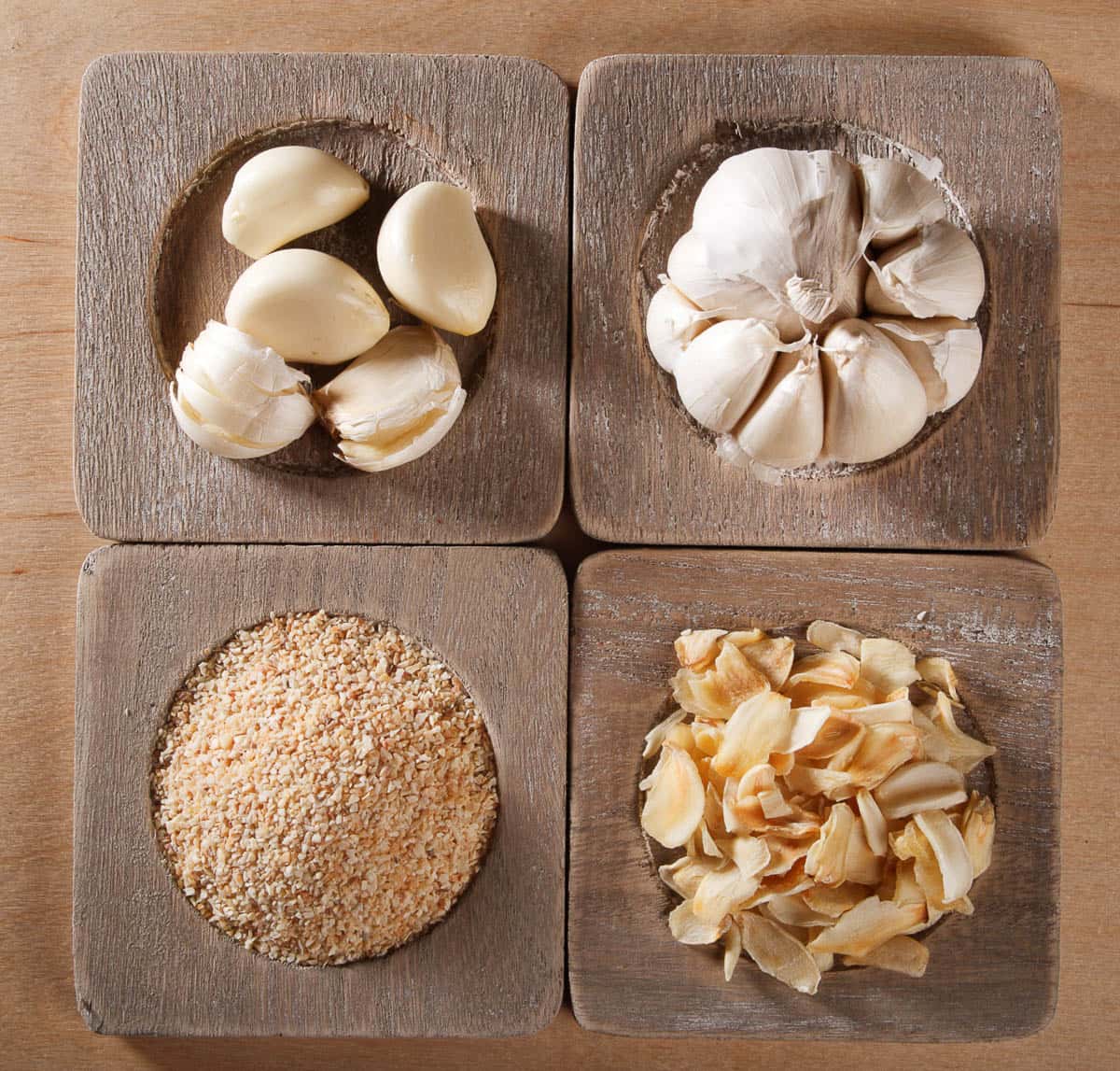
Fresh Garlic
Fresh garlic has a different texture and sweet flavor compared to granulated garlic. That said, it is often considered to be a great substitute.
When buying fresh garlic, feel for firm cloves that are not dry or soft. Be on the lookout for a green shoot coming out of the top of the bulb, as this indicates an older bulb that should be avoided. Once home, store in a cool and dry place.
How you prepare the garlic influences the flavor. As explained above, the more the clove is broken down, the more potent the flavor. Finely chopped, thin sliced, or crushed garlic has the strongest flavor. Whole cloves, coarsely chopped, or thick slices will be milder.
To mince your own:
- Remove the skin from the garlic cloves
- Use the flat side of a kitchen knife (sharp edge facing away from you) to crush the cloves
- Then, begin to chop the crushed cloves until they resemble couscous (finely chopped bits)
When making your own minced garlic, always do so right before you plan to cook. To maximize flavor, you should mince each clove of garlic and use it immediately (e.g. placing it in a pan to saute).
- Substitution: Start with a 2:1 ratio for each teaspoon granulated garlic. For example, if the recipe calls for 1 teaspoon granulated, use 2 cloves of fresh garlic.
- Special Notes: Best used in dishes calling for sauteed garlic, soups, sauces, stews, and stir fries. Finer preparations (e.g. thinly sliced, minced, or pressed) will always taste stronger than coarser ones (whole cloves, thick slices, etc.)
Garlic Flakes
Garlic flakes are simply minced garlic cloves that have been dehydrated. Compared to fresh garlic, dehydrated garlic flakes will have a more intense flavor. Use the right amount, however, and it will be difficult to tell the difference.
- Substitution: Use a 2:1 ratio per teaspoon of garlic granules. For example, if the recipe calls for 1 teaspoon garlic granules, use 2 teaspoons garlic flakes.
- Special Notes: More intense flavor compared to fresh garlic. Use garlic flakes in dishes that have liquid and require cooking time. This allows the garlic flakes to soften and release their flavor.
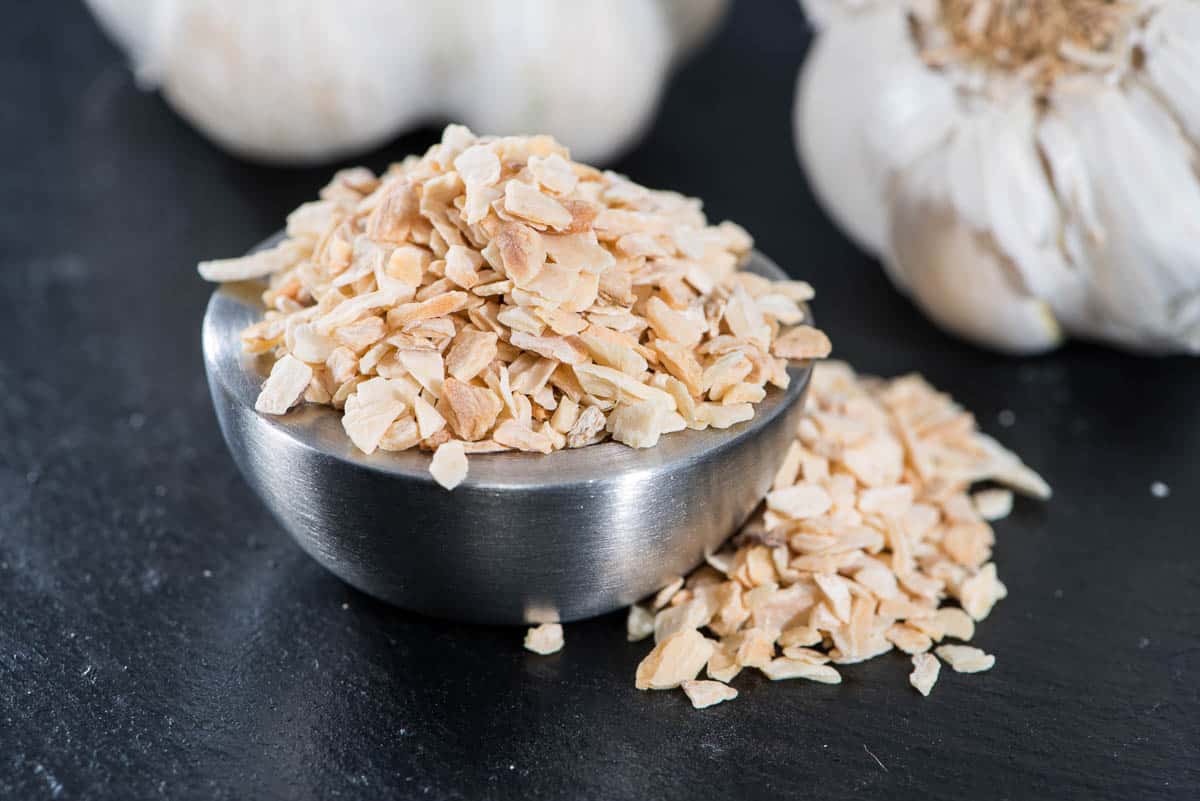
Minced Garlic (from a jar)
Jarred minced garlic is fresh garlic cloves that have been finely chopped and preserved in either oil or water. This substitute can be purchased from most grocery stores.
Store-bought is a good option, but it will have a weaker flavor compared to homemade.
Whether you choose to do your own or to buy minced garlic, keep in mind that these small pieces of garlic will burn easily if added to hot oil. This is common when stir frying vegetables or cooking Asian-inspired dishes in a wok.
To avoid burning the garlic, cook/saute the other vegetables first. Once they soften, add the minced garlic for flavor.
- Substitution: Use a 1:½ ratio per teaspoon of granulated garlic. For example, if the recipe calls for ½ teaspoon granulated garlic, use 1 teaspoon minced.
- Special Notes: Best in marinades, sauces, toppings, stir fries and stews as well as other dishes.
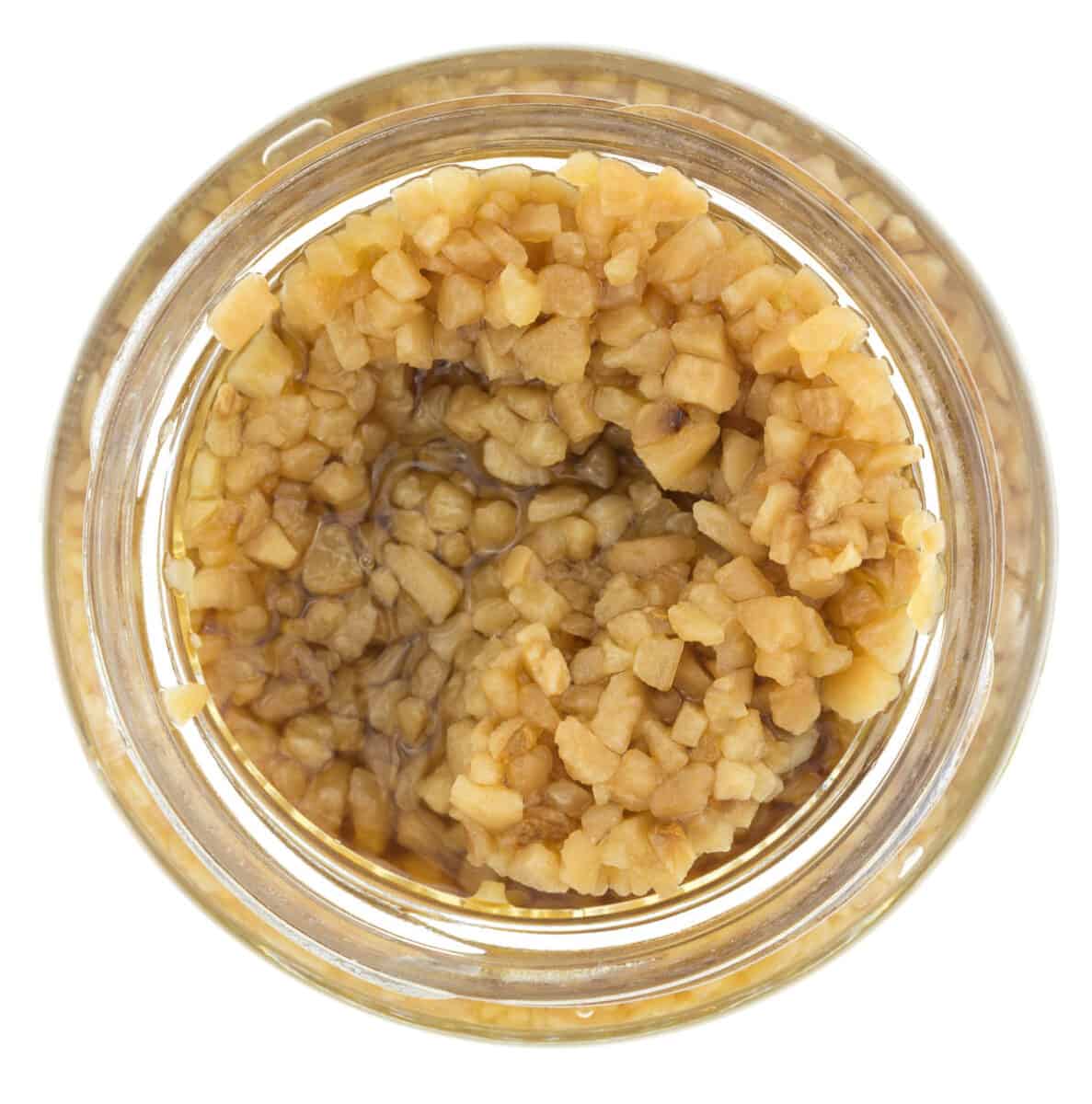
Garlic Salt
Garlic salt is not a perfect substitute, but it will do in a pinch. However, it is important to consider what garlic salt is, and how it will affect the recipe.
Garlic salt is typically a 1:3 ratio of garlic powder and salt, meaning that every 1 part garlic is overpowered by an additional 3 parts salt. It also has an anti-caking agent mixed throughout.
This means two important things. First, the flavor will be primarily salty with a mild “garlic” taste to it. Second, if the recipe also calls for salt, you should omit it (since you are already adding a lot of salt via the previously mentioned mixture).
- Substitution: Use a 1:¼ ratio per teaspoon granulated garlic. For example, if the recipe calls for ¼ teaspoon granulated garlic, use 1 teaspoon of garlic salt.
- Special Notes: You may have to adjust any other salt the recipe calls for to avoid extra salt making the dish too salty. Best when used in grilling vegetables, dry rubs, dressings, marinades, soups and salad dressings.
Garlic Oil
Garlic oil is oil that has been infused with garlic. The garlic can be chopped, crushed or left as whole cloves and put in vegetable oil to flavor it. Garlic oil can be bought at the store, or it can be made at home.
The store bought garlic oil also contains a preservative like salt, citric acid, or sulfuric acid. This gives it a stable shelf life.
To make garlic oil at home, simply combine 4 cloves of chopped garlic with ¾ cup oil (olive oil is common, but you may also use vegetable oil). Cover and leave for about 15 minutes, then strain before using.
A word of caution: Because garlic is such a low acid food, homemade garlic oil is susceptible to botulism growth. Always refrigerate, and never use if left at room temperature for more than 2 hours. Even if refrigerated, always discard after 2 days.
To stay on the safe side, always make small quantities that will be used immediately.
- Substitution: Use a 1:½ ratio per teaspoon granulated garlic. For example, if the recipe calls for ½ teaspoon granulated garlic, use 1 tablespoon of garlic infused oil.
- Special Notes: Garlic oil can be used drizzled in soups, salad dressings, marinades, drizzled on bread in place of butter, and pasta dishes. It adds a nice roasted garlic taste to your dish.
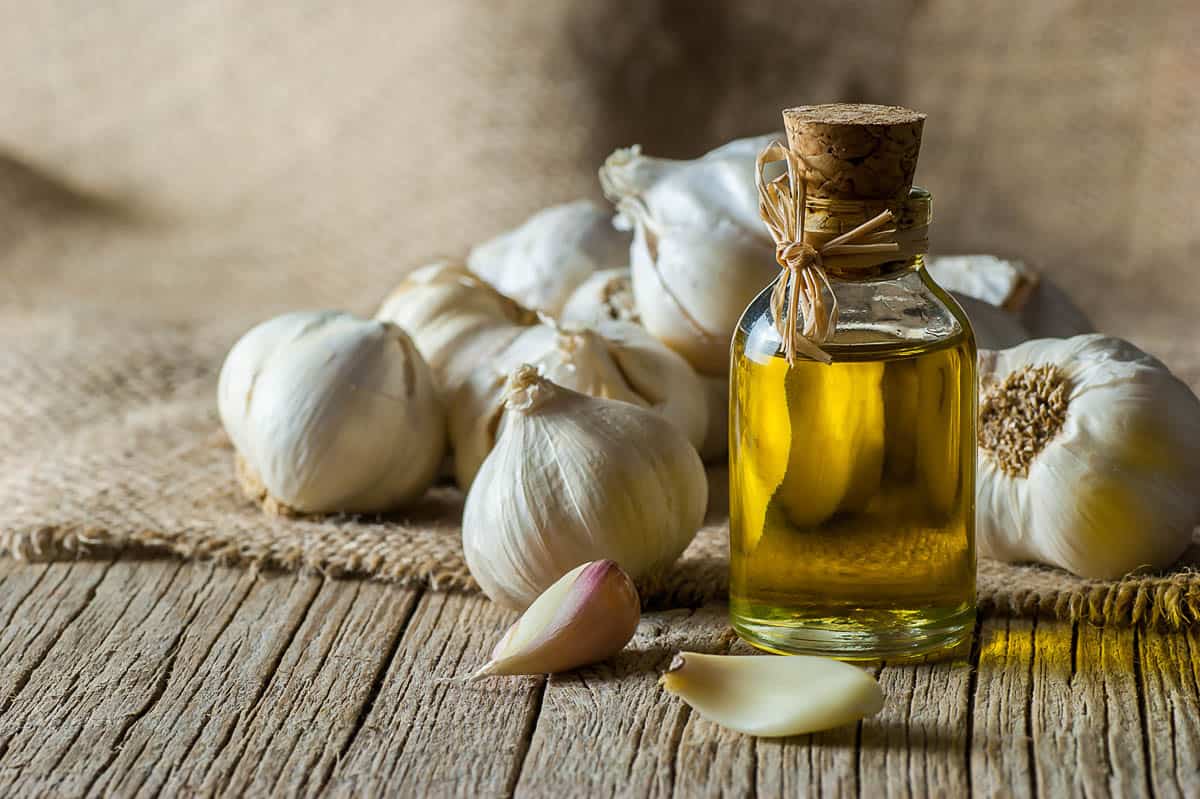
Garlic Chives
This is an herb that adds a garlic flavor to dishes such as soups, casseroles, meats, marinades, salads, stews, scrambled eggs and stir-fries.
Garlic chives have a mild garlic flavor, with a hint of onion (chives are similar but with a predominantly onion flavor.)
- Substitution: Use a 1:¼ ratio per teaspoon granulated garlic. For example, if the recipe calls for ¼ teaspoon granulated garlic, use 1 tablespoon chopped garlic chives.
- Special Notes: May burn easily. Add to the end of the cooking process. Best when used in soups, casseroles, meats, marinades, salads, stews, scrambled eggs, and stir fries.
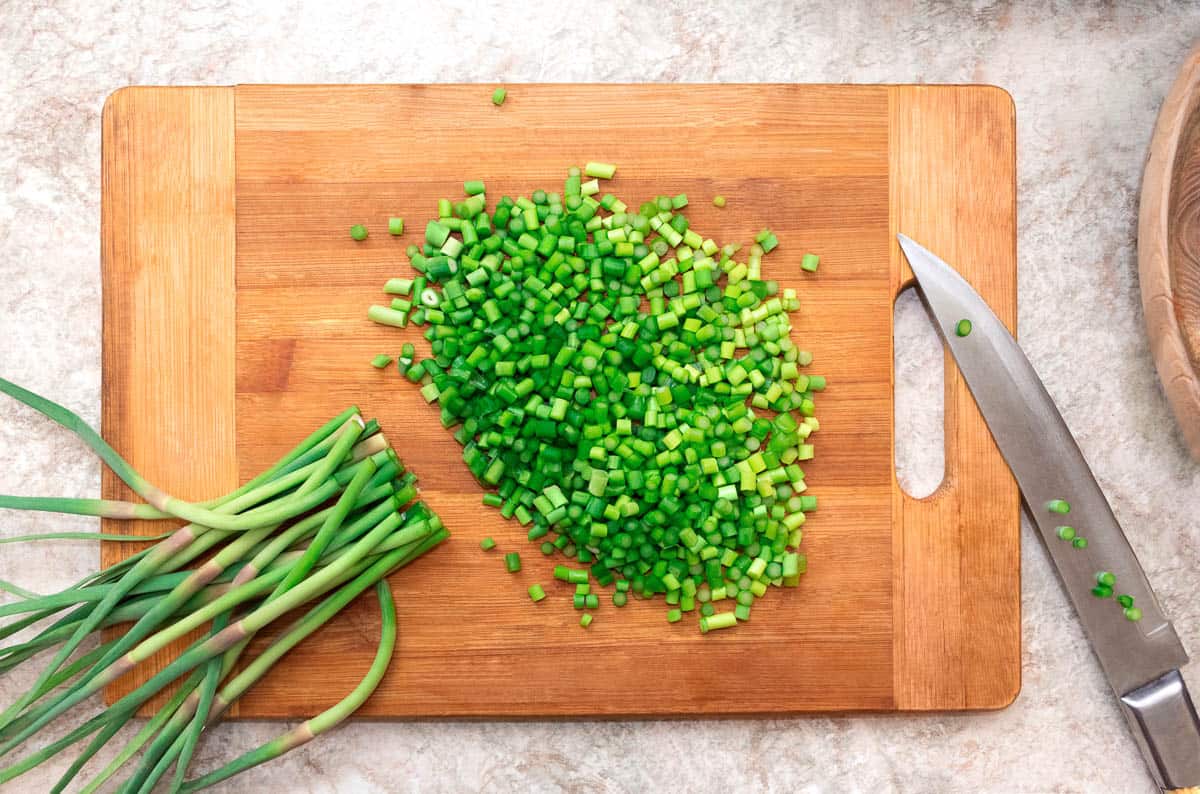
Garlic Juice
As the name implies, this is juice from garlic cloves. It can be bought in the store, or you can make your own. Garlic juice has a stronger flavor compared to some of the alternatives mentioned above, so it’s best to use sparingly.
- Substitution: Use a ½:1 ratio per teaspoon granulated garlic. For example, if the recipe calls for 1 teaspoon of granulated garlic, use ½ teaspoon of garlic juice.
- Special Notes: Best when used in soups, stews, marinades, salad dressings, sauces, stir fries and vegetables.
Garlic Paste
This flavorful paste is simply garlic cloves that have been blended with a touch of oil and/or water and preservatives. This is most often found in the fresh produce section of your local grocery store.
This garlic substitute should be kept refrigerated in an airtight container. When refrigerated, do not keep past 5 days.
- Substitution: Use a 1:¼ ratio per teaspoon of granulated garlic. For example, if the recipe calls for ¼ teaspoon of granulated garlic, use 1 teaspoon garlic paste.
- Special Notes: Best when used in soups, stews, and stir fries, to name a few.
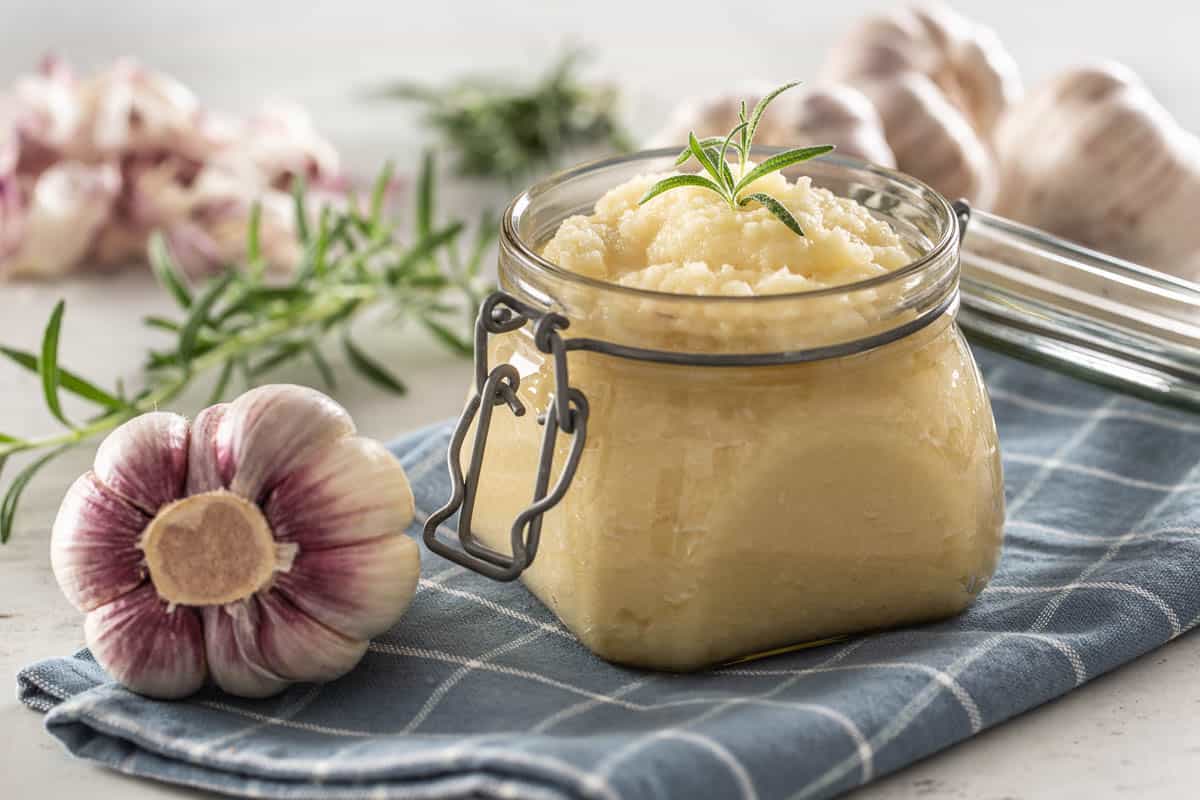
Although more research is needed, there are a number of health benefits attributed to garlic. This is likely due to garlic’s potent contents: Vitamin B6, selenium, manganese, Vitamin C, and fiber are just a few of the nutrients you can get from a single low calorie garlic bulb.
With such a powerful punch and delicious flavor, there’s good reason to include garlic in your recipes. Enjoy experimenting with these garlic substitutions, and remember: Some form of garlic should always be a pantry staple!
Do you have any other tried and true substitution recommendations? Please let me know in the comments!



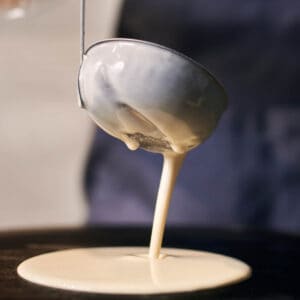
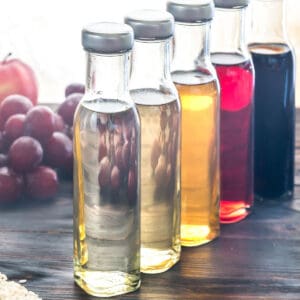

Leave a Reply